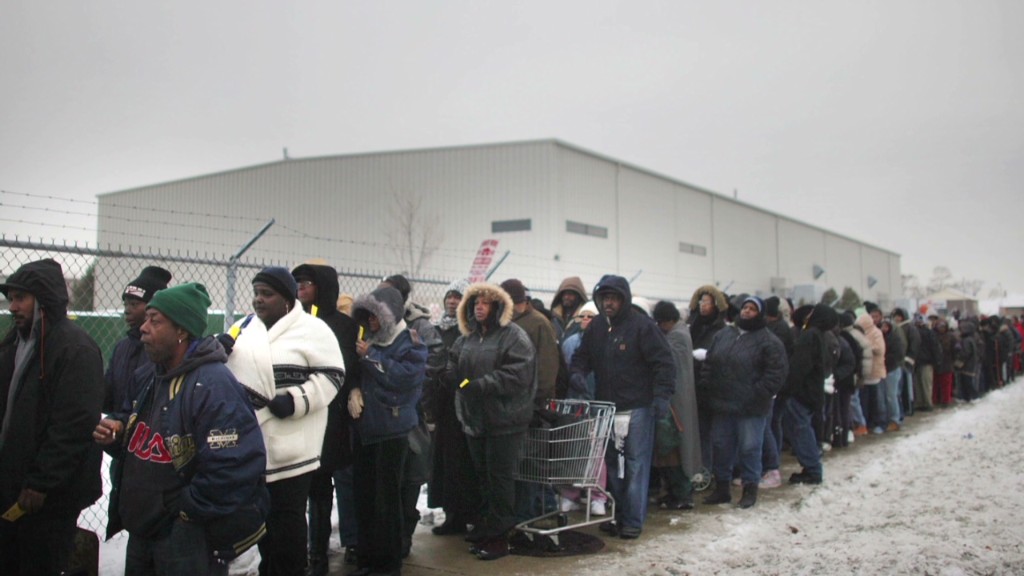
Last year Forbes pegged Tiger Woods' income at $78 million. Elton John made $80 million, and Oracle CEO Larry Ellison pocketed a cool $98 million.
Meanwhile, a middle-income American earned a wage of just $39,963, according to the Bureau of Labor Statistics.
Incomes for regular folks have actually declined over the past few decades, while pay has skyrocketed for the Larry Ellisons of the world.
Average income for the bottom 90% of American families fell 1.2% since 1983, according to numbers from University of California, Berkeley, Economist Emmanuel Saez. (That's after adjusting for inflation). Incomes for the top 1% have surged 145%.
Why do a select number of people at the top reap such huge gains, while the rest of us see little to no improvement? Economists have a few theories:
Related: How income inequality hurts America
Globalization: As more people around the world enter the middle class, the superstars of the world are able to leverage their global brand to sell that much more stuff. It works the same with companies too. They can make more money as more people can afford to buy their products.
Athletes, celebrities, and business owners alike are able to sell their products and services to a wider range of buyers.
"They can tap an ever larger market," said Micheal Wolf, an economist at BLS. "There are the same number of people at the top, but they can appeal to a much broader base."
Related: The 25 highest-paid men
Winner take all: This theory contends that there are some people that are just really good at their jobs. As technology improves and markets get larger, the best workers know how to leverage those advances to take an ever larger share of the economic pie.
This extends not just to celebrities and CEOs, but also to top performers in many professions, said Robert Frank, an economist at Cornell University who wrote a book on the subject in the 1990s.
Thanks to email, cell phones and other technology, the best sales person, doctor, lawyer, etc. "can handle a much larger share of the load than before," said Frank. "It's a real bad time for mediocre people."
Related: The 25 highest-paid women
Changes in rewards: Prior to the 1990s, most executive compensation -- executive and finance types make up two thirds of the top 1% -- came in the form of cash. Corporations could deduct from their taxes whatever they paid their top executives.
Then, in an effort to rein in executive pay, President Bill Clinton enacted a law that prohibited companies taking a tax deduction on executive pay over $1 million, unless it was tied to stock performance. As a result, more compensation came in the form of stock options.
It also happened that the early 1990s was the start of a long bull market in stocks.
"These executives found that their total compensation went kaboom," said Peter Cappelli, a professor of management at Wharton. "And that changed the bar as to what was normal and typical."

Lower tax burdens: Prior to the 1980s, taxes were much higher for the rich. The top income tax rate in 1980 was 70%. In 1945 it was 94%.
"Why would you pay someone millions of dollars a year if the government was going to take 90% of it?" said Lawrence Mishel, President of the Economic Policy Institute.
Now, the top tax rate is 39.5%. Lower taxes mean there's now more of an incentive for people to chase, and for companies to give, huge paychecks.


